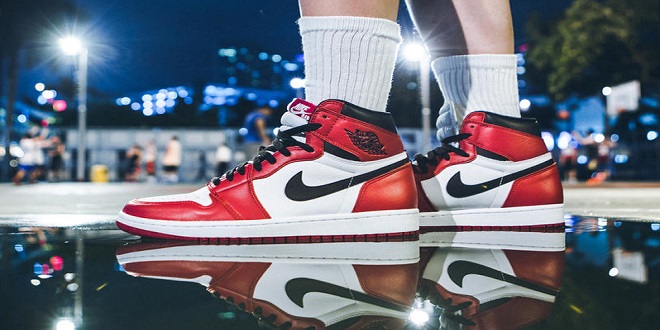Facts About Nike AJs

Basketball legend Michael Jordan partnered with Nike in 1984, and the companies set out to make $3 million (about THB 92,220,000) in revenue during the first four years of operation. Out of this, Nike made US$126 million (about THB 3,873,240,000) in its first year of sales because of the overwhelming success of the original Air Jordan.
Nike Air Jordan is a collection of technologically high-performance, comfortable, artistically designed, and sophisticated shoes; here are some fascinating facts about the brand, whether you already own a pair or want to acquire one in the future.
The NBA supposedly “banned” the first Air Jordan.
Michael Jordan debuted the original Air Jordan prototype on the court for the first time on October 18, 1984. The following year, the unique red-and-black sneakers will be released as Air Jordan I. The National Basketball Association (NBA) is strict about its uniform colour shoe regulation; therefore, Michael was fined US$5,000 (about THB 153,745) every time he wore the sneakers. Nike seized the opportunity, and after successfully debuting Air Jordan I (for US$65) with a marketing campaign centred around NBA regulations, the company never looked back (approx. THB 1,998).
Jumpman branding debuted on the Air Jordan III.
After its debut on the Nike Air Jordan III in 1988, the Jumpman has become one of the most recognisable sporting logos and has been featured on every pair of sneakers since. Michael is depicted as a silhouette, jumping high into the air, legs spread wide in preparation to dunk. The iconic image of Michael originally debuted on the Air Jordan I hang tag, in commercials, and on clothing in 1985.
Confusion reigned when the Air Jordan XI Retro Concords were released.
Initially released in 1995, these shoes are considered by many to be the pinnacle of Air Jordan designs. It’s the first of its kind to employ a carbon fibre plate in the market. Concord is so named for its distinctive ballistic nylon upper fabric and patent leather details that set them apart from the competition. Jordan proposed using leather in a sneaker, while the famed designer behind most Air Jordans, Tinker Hatfield, was inspired by a Japanese baseball shoe.
In other words, Air Jordan XIII was the shoe that launched the Jordan brand.
In 1997, Jordan Brand introduced the world to the Air Jordan XIII. Intending to create “a pure, authentic basketball brand of premium, high-performance basketball footwear and clothing,” Nike launched the Air Jordan label to sell all of Michael Jordan’s signature sneakers. Michael’s ‘Black Cat’ moniker was the design inspiration for these kicks. It has a carbon fibre plate and an outsole shaped like a panther’s paw, both of which increase the player’s responsiveness. It stands out due to the heel’s green holographic ‘eye’.
The majority of Air Jordans’ inspiration comes from either automobiles or aircraft.
Most Air Jordan sneakers’ major inspiration came from automobiles, aeroplanes, and motorbikes. European vehicles’ streamlined appearance and high performance inspired the Air Jordan 6 and XVIII. Air Jordan V’s shark teeth pattern was inspired by a WWII fighter plane, while XV’s design was taken from the X-15 and XX2’s from the F-22 stealth fighter. Animals have also inspired Air Jordans in addition to machinery. The Air Jordan XIX takes aesthetic cues from Africa’s venomous black mamba snake.
The Nike swoosh has been removed, as with the Air Jordan II model.
The distinctive “swoosh” emblem on the Nike brand is instantly recognisable. Nonetheless, the manufacturer made a bold step by not including the emblem on the Air Jordan II. It was first released in 1986, and it’s the only pair of shoes in the whole collection manufactured in Italy. Famous as a high-end shoe due to its sleek upper and convincing lizard skin patterning, it has become a fashion staple.




